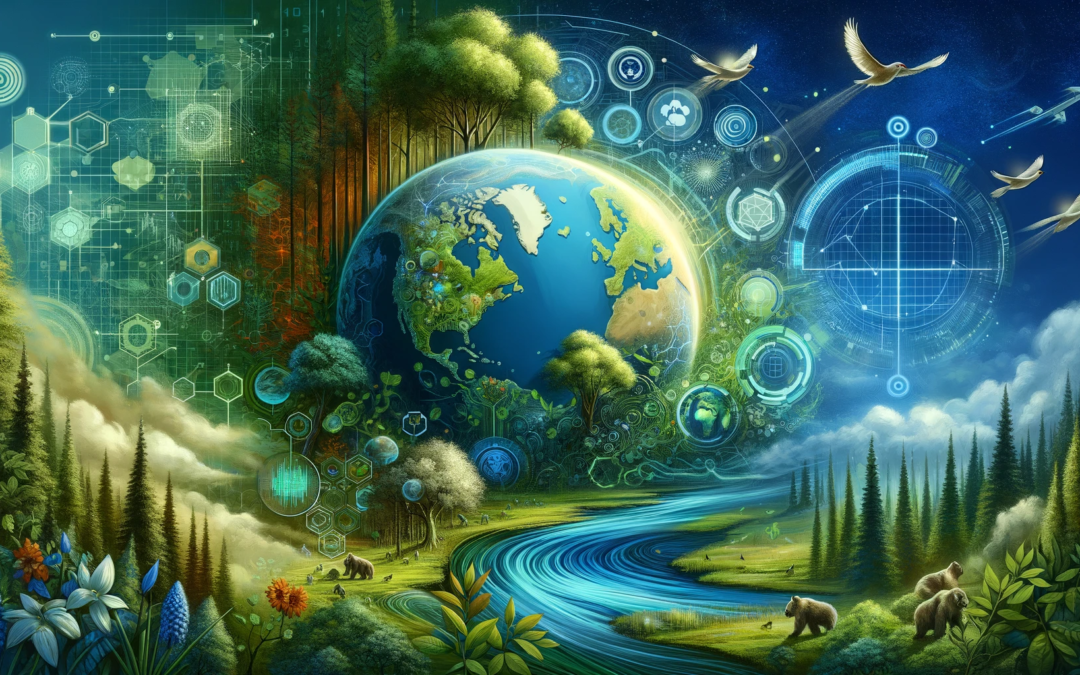As our planet faces increasing environmental challenges, the need for effective monitoring and conservation strategies has never been greater. Thankfully, advancements in artificial intelligence (AI) are providing us with powerful tools to tackle these issues head-on. In this blog post, we will explore how AI is revolutionizing environmental monitoring and conservation efforts, paving the way for a more sustainable future.
AI in Climate Change Analysis
One of the most crucial aspects of environmental monitoring is understanding climate change. AI is playing a pivotal role in analyzing climate data, predicting environmental changes, and modeling potential future scenarios. By harnessing the power of AI, scientists can make more accurate predictions and develop strategies to mitigate the impacts of climate change. For instance, AI-driven climate research initiatives are using machine learning algorithms to analyze vast amounts of data and provide valuable insights into climate patterns and trends.
AI in Wildlife Conservation
Protecting our planet’s rich biodiversity is essential for maintaining a healthy ecosystem. AI is proving to be a valuable ally in wildlife conservation efforts. With AI-powered technologies, researchers can track animal populations, identify endangered species, and combat poaching. For example, AI algorithms can analyze camera trap images to identify and monitor specific species, helping conservationists focus their efforts more efficiently. Additionally, AI-driven anti-poaching systems are being developed, which can detect and alert authorities to potential threats in real-time.
AI in Natural Resource Management
Sustainable management of natural resources is crucial for preserving our planet’s delicate balance. AI tools are being employed to optimize resource management practices, whether it’s water, forests, or minerals. By analyzing vast amounts of data, AI algorithms can identify patterns and make predictions, enabling more efficient resource allocation. For instance, AI-powered systems can optimize water usage in agriculture or predict deforestation hotspots, allowing for targeted interventions to prevent further destruction.
AI in Pollution Detection and Control
Pollution poses a significant threat to our environment and human health. AI is revolutionizing pollution detection and control efforts, making them more accurate and efficient. AI-powered air quality monitoring systems can analyze data from various sensors and provide real-time information about pollution levels. This enables authorities to take immediate action to protect public health. Additionally, AI algorithms can optimize waste management processes, reducing the environmental impact of waste disposal.
Challenges and Ethical Considerations
While AI offers immense potential for environmental monitoring and conservation, there are challenges and ethical considerations that must be addressed. Ensuring data accuracy, protecting privacy, and minimizing the impact on natural habitats are some of the key concerns. It is essential to develop responsible AI practices and frameworks that prioritize transparency, accountability, and environmental stewardship. By addressing these challenges head-on, we can harness the full potential of AI while minimizing any negative consequences.
The Future of AI in Environmental Conservation
Looking ahead, the future of AI in environmental monitoring and conservation is promising. As technology continues to advance, we can expect even more sophisticated AI tools and applications. Imagine AI-powered drones monitoring wildlife populations or machine learning algorithms that can predict the spread of invasive species. The possibilities are endless. However, it is crucial to ask questions about the long-term impact of AI on environmental sustainability and ensure that we use this technology responsibly to safeguard our planet.
Engaging with the Audience
We would love to hear your thoughts and experiences with AI-driven environmental initiatives or technologies. Have you come across any innovative AI applications in environmental conservation? What do you think are the potential benefits and challenges of integrating AI into environmental monitoring? Let’s start a conversation and explore the future of planetary stewardship in the age of advanced AI.
Conclusion
AI is transforming the way we monitor and protect our environment. From climate change analysis to wildlife conservation and natural resource management, AI is revolutionizing our approach to environmental challenges. By using AI responsibly and ethically, we can become true guardians of the planet, ensuring a sustainable future for generations to come. Let’s embrace the power of AI and work together to safeguard our precious natural resources.
Visual Elements
Throughout this blog post, we have included images and graphics showcasing AI applications in environmental monitoring and conservation. These visual elements highlight the power of AI in climate analysis, wildlife tracking, resource management, and pollution control. We have also used infographics to illustrate the impact of AI on promoting environmental sustainability and biodiversity protection.
SEO Elements
This blog post focuses on the role of AI in environmental monitoring, conservation, and sustainability efforts. The keywords “AI in environmental monitoring,” “AI in conservation,” and “AI-driven sustainability efforts” have been naturally integrated into the content to optimize search engine visibility. The meta description encapsulates the post’s focus on AI’s role in environmental protection, enticing readers to dive into the fascinating world of AI-powered environmental conservation.










